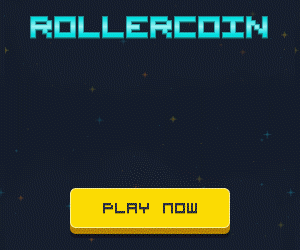The Ethereum ecosystem is buzzing with anticipation as the Dencun Update looms on the horizon. Scheduled for activation on March 13, 2024, the Dencun update marks a significant milestone for the Ethereum network, combining the Cancun and Deneb upgrades into one comprehensive package.
Unlocking the potential of Ethereum’s Dencun update
Improving efficiency and security
At its core, the Dencun update aims to improve the efficiency and security of the Ethereum network. One of its primary goals is to reduce transaction costs while improving scalability. These improvements are critical to sustaining Ethereum’s growth and ensuring its continued relevance in the rapidly evolving landscape of blockchain technology.
Introducing Proto-Danksharding
A key feature of the Dencun update is the introduction of Proto-Danksharding, a critical step towards achieving full danksharding. This breakthrough technology promises to significantly increase the number of transactions processed per second on the Ethereum network, paving the way for greater scalability and adoption.
EIP-4844: A Game-Changing Improvement
Among the various Ethereum Improvement Proposals (EIPs) included in the Dencun update, EIP-4844 stands out as particularly noteworthy. This proposal aims to address Ethereum’s scalability challenges, reduce transaction costs, and benefit the ecosystems associated with Layer 2 solutions. By addressing these issues head-on, EIP-4844 is poised to usher in a new era of innovation and growth within the Ethereum community.
Anticipation and Expectations
Much like the highly anticipated bitcoin halving events, the upcoming Ethereum Dencun update has captured the attention of cryptocurrency enthusiasts worldwide. As the Ethereum ecosystem prepares for this transformative update, stakeholders are eager to see the positive impact it will have on the network’s performance and functionality.
Opportunities for token development
With the Dencun update set to improve security, scalability and functionality, certain tokens may see increased opportunities for development and growth in its wake. Let’s explore some potential areas of growth in the context of the Ethereum Dencun update.
Layer 2 Solutions
At the heart of the Dencun update is EIP-4844, which directly increases the performance of Layer 2 solutions while reducing transaction fees through the introduction of Blob. This improvement will strengthen the competitiveness of Layer 2 solutions within the Ethereum ecosystem and position them favorably against other Layer 1 projects.
Metis (METIS)
Metis is an optimistic rollup Layer 2 solution on Ethereum, designed to speed up transactions while maintaining Layer 1 security. Its use of fraud proofs for transaction validation and focus on decentralized governance underscore its innovative approach to Layer 2 solutions.
Loopring (LRC)
Loopring is a decentralized exchange (DEX) that combines automated market making (AMM) with order book trading, leveraging zkRollups for enhanced performance. Its ability to execute complex trading strategies at low cost and high speed sets it apart in the decentralized exchange landscape.
Manta (MANTA)
Manta offers a Layer 2 ecosystem for native EVM ZK applications, providing a low-cost, highly scalable environment for deploying applications using Solidity. Leveraging Celestia for data availability and ZKEVM for scalability, Manta aims to improve the efficiency and accessibility of ZK applications on Ethereum.
AltLayer (ALT)
AltLayer introduces restaked rollups, enhancing existing rollups with improved security, decentralization, and interoperability. Founded by industry luminaries such as Balaji Srinivasan and Gavin Wood, AltLayer is at the forefront of rollup solutions with its ALT token for governance, incentives and fees.
Restaking Projects
Restake projects such as Restake Finance offer innovative solutions for maximizing returns within the Ethereum ecosystem. By allowing users to stake their tokens and earn rewards, these projects play a critical role in securing the network and driving its growth.
Restaking is one of the few cryptocurrency projects on the Ethereum restaking track that can handle a large amount of activity on the track. Restaking allows LST (EigenLayer Token) to be used as a low-cost crypto-security for active verification services on the EigenLayer network. Restake Finance provides a decentralized approach to performance restaking.
Users can reintroduce their LST to EigenLayer by introducing protocol restake ETH tokens (rstETH). The user’s LST will be stored therein via a smart contract controlled by a DAO and will receive Ethereum staking rewards as well as native EigenLayer rewards. rstETH is decentralized and fully backed by stETH in a one-to-one relationship.
Restake Finance will be supported by Restake Finance’s DAO, who will ensure that the project maintains its decentralized nature and aligns its development with stakeholder interests.
The DAO will manage the project through its RSTK utility token and governance. Its primary goal is to accumulate value for token holders through governance and revenue generation. The system will charge fees on all EigenLayer rewards and share these fees with RSTK token holders.
Liquidity Staking Derivatives (LSD)
Liquidity Staking Derivatives protocols such as Prisma and Stader provide a way for users to leverage their assets and earn rewards within the Ethereum ecosystem. These protocols incentivize participation in liquidity pools while providing stability and efficiency in the decentralized finance (DeFi) landscape.
PRISMA
Prisma is a decentralized lending protocol that facilitates the creation of the mkUSD stablecoin, backed entirely by liquidity staking tokens. This protocol incentivizes participation on platforms such as Curve and Convex Finance, allowing users to earn Ethereum staking rewards and trading fees. Prisma stands out for its stability and efficiency in the Ethereum liquidity staking derivatives ecosystem.
Stader (SD)
Stader takes a modular approach to smart contract development, enabling the creation of diverse staking solutions on multiple chains such as Terra and Solana. With a robust economic ecosystem, Stader is focused on the long term to foster the development of staking applications. The SD token, which is used for governance, priority authorization, and more, has shown significant growth and anticipates promising developments in 2024.
Rocket Pool (RPL)
Rocket Pool is a decentralized staking service for Ethereum 2.0, designed to make staking more accessible by reducing hardware and capital requirements. Through its RPL token, Rocket Pool provides a decentralized governance structure, rewards for running nodes and for staking, and aims to improve the security and decentralization of the network.
This staking pool has established itself as a leading infrastructure for decentralized Ethereum staking, distinguished by its innovation and robustness in the market.
Derivatives Trading Platforms
Derivatives trading platforms such as GMX and Vertex offer sophisticated trading tools and services on top of Layer 2 solutions such as Arbitrum. By allowing users to trade a wide range of assets with leverage, these platforms contribute to the liquidity and efficiency of the Ethereum ecosystem.
GMX (GMX)
GMX is a decentralized AMM protocol for derivatives on Arbitrum, specializing in spot and perpetual trading of cryptocurrencies such as Bitcoin, Ethereum and AVAX with up to 50x leverage. It offers low spreads and zero price impact, encouraging inclusive participation without the need for central authorization.
The GMX token incentivizes participation in the ecosystem by sharing trading fees. With the transition to GMX V2 and the expansion of Ethereum and Layer 2, significant growth is expected for GMX.
See also: Unveiling Dencun: Ethereum’s Game-Changing Update
Vertex (VRTX)
Vertex is an order book derivatives protocol on Arbitrum that uses a hybrid approach combining a Central Unified Order Book (CLOB) and an Integrated Automated Marketplace (AMM) to enhance liquidity.
This design enables low-latency trading and efficient liquidity utilization for a wide range of DeFi assets, minimizing the Miner Extracted Value (MEV) on Ethereum L1. The VRTX token will be used to participate in governance and trading rewards, with business expected to increase with Layer 2 performance improvements.
Conclusion
The Ethereum Dencun update represents a significant milestone in the evolution of the Ethereum network, ushering in a new era of scalability, security and innovation. As the Ethereum ecosystem continues to expand and mature, opportunities abound for developers, investors, and enthusiasts alike to participate in its growth and development.
FAQs
1. What is the Ethereum Dencun Update?
The Ethereum Dencun Update is a significant upgrade to the Ethereum network that combines the Cancun and Deneb updates into one comprehensive package. It aims to improve the efficiency, security and scalability of the network while reducing transaction costs.
2. When is the Ethereum Dencun Update expected to be activated?
The Ethereum Dencun Update is scheduled to be activated on March 13, 2024.
3. What are the main goals of the Ethereum Dencun update?
The main goals of the Ethereum Dencun update are to improve the efficiency and security of the network, reduce transaction costs, and improve scalability to accommodate a greater number of transactions.
4. What is Proto-Danksharding and how does it relate to the Dencun update?
Proto-Danksharding is a technology introduced as part of the Dencun update, which is an important step towards achieving full danksharding. It aims to increase the number of transactions processed per second on the Ethereum network, thereby improving scalability.
5. What is EIP-4844 and why is it important?
EIP-4844 is one of the Ethereum Improvement Proposals (EIPs) included in the Dencun update. It addresses scalability issues within the Ethereum network, reduces transaction costs and benefits Layer 2 solutions and related ecosystems.
6. How will the Ethereum Dencun Update affect token development?
The Dencun Update is expected to create opportunities for token development by improving security, scalability and functionality within the Ethereum ecosystem. Tokens related to layer 2 solutions, staking, liquidity provision and derivatives trading may see increased development and adoption.
7. What are some promising projects within the Ethereum ecosystem that could benefit from the Dencun update?
Projects such as Metis, Loopring, Manta, AltLayer, Restake Finance, Prisma, Stader, GMX and Vertex are among those poised to benefit from the Ethereum Dencun update. These projects offer innovative solutions for scalability, staking, liquidity provision and derivatives trading.
8. How can users prepare for the Ethereum Dencun update?
Users can stay informed about the progress of the Dencun update by following official Ethereum channels and announcements. In addition, they can explore opportunities to participate in projects and protocols that will benefit from the update.
9. What are the potential risks associated with the Ethereum Dencun Update?
As with any major network upgrade, there may be risks such as technical glitches, compatibility issues, and unforeseen vulnerabilities. It’s important for users to exercise caution and stay informed about any potential risks or developments related to the Dencun update.
10. Where can I find more information about the Ethereum Dencun Update and its impact?
For more information about the Ethereum Dencun update and its impact, users can refer to the official Ethereum documentation, developer forums, and reputable cryptocurrency news sources.
Follow us on our social networks and keep up to date with everything that happens in the Metaverse!
Twitter Linkedin Facebook Telegram Instagram Google News Amazon Store












































